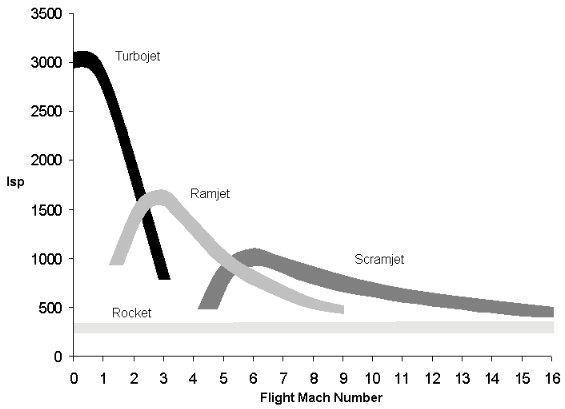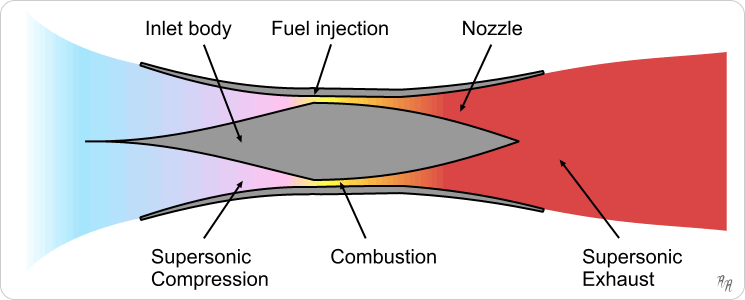Your questions
At what point (if any) does air stop getting sucked into the turbine and is just getting rammed in?
On a CFM56-7B engine (Boeing 737 NG) pressure is provided by the fan, the low pressure compressor and the high pressure compressor with respective pressure ratios of about 1, 3 and 9, that is pressure is increased by a factor of 28 before air is delivered to the combustor for a cruise speed of about Mach 0.8.
This required compression ratio is indeed reduced as airspeed increases and pressure from speed increases. This natural compression occurring at the engine inlet is called ram pressure:

Ram compression ratio vs airspeed, source
About Mach 2.5 or 3, air can be delivered in sufficient quantity to the combustor without a compressor. The fan is not needed anymore, all air entering the engine is mixed with fuel. The turbine can be removed too as there is nothing to spin anymore.
Such engines without compressors are named ramjets and scramjets. They have no rotors or stators. In theory a ramjet could work starting at Mach 0.5, but it doesn't produce any useful thrust:

Rocket, turbojet, ramjet, scramjet efficiency, source
Do any turbofan powered airplanes go fast enough that they no longer need to "suck" air in to maintain power?
A turbofan combines a core engine and a fan. The fan produces most of the thrust, the core engine mostly turns the fan.
Fans cannot work at supersonic speed, they wouldn't be efficient. therefore when the compressor is not required, airspeed is too fast for a fan. Actually neither the ramjet nor the scramjet have a fan, they are pure reaction engines.
Ramjet
The first engines to operate on this principle is the ramjet. The difficulty is to maintain a combustion at this speed (this is a 3,000 km/h wind), to solve this problem, a ramjet slows air down before it is mixed with fuel in the combustor.

Ramjet princple, Wikipedia

Nord 1500 Griffon II, one of the first ramjet aircraft, source
Scramjet
With some improvements, supersonic burners have been built, though very inefficient ones. This engine is known as scramjet. It works at higher speeds than a ramjet.

Scramjet principle, Wikipedia
Need a little help
However no ramjet, and even less a scramjet, can produce static thrust. Both need some initial forward speed for to start the combustion. They can be launched from another aircraft:

Leduc 010 on top of SE-161 for an air-launch, source
Aircraft can be fitted with an additional subsonic engine, a convertible engine (turbojet or ramjet) or with rocket boosters.

J-58, convertible turbojet/ramjet used on SR-71 and other aircraft, source
In spite of their inconveniences, ramjets and scramjets are used on a few fast military aircraft, but their kingdom is missiles where larger airspeed often means larger altitude and extended range.







